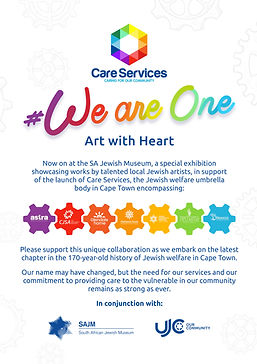top of page
#WEAREONE | Art with Heart

Open to the public from Friday, 15 August 2025, a special exhibition showcasing works by talented local Jewish artists, in support of the launch of Care Services, the Jewish welfare umbrella body in Cape Town:
Please support this unique collaboration as we embark on the latest chapter in the 170-year-old history of Jewish welfare in Cape Town.
Our name may have changed, but the need for our services and out commitment to providing care to the vulnerable in our community remains as strong as ever.
bottom of page
